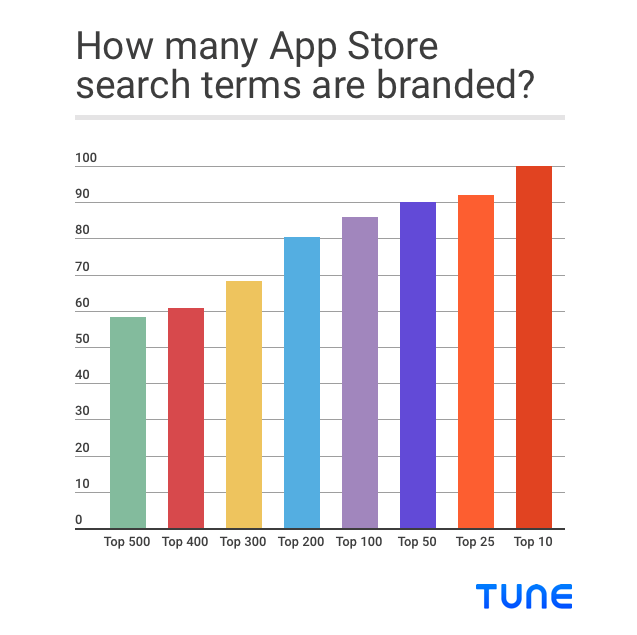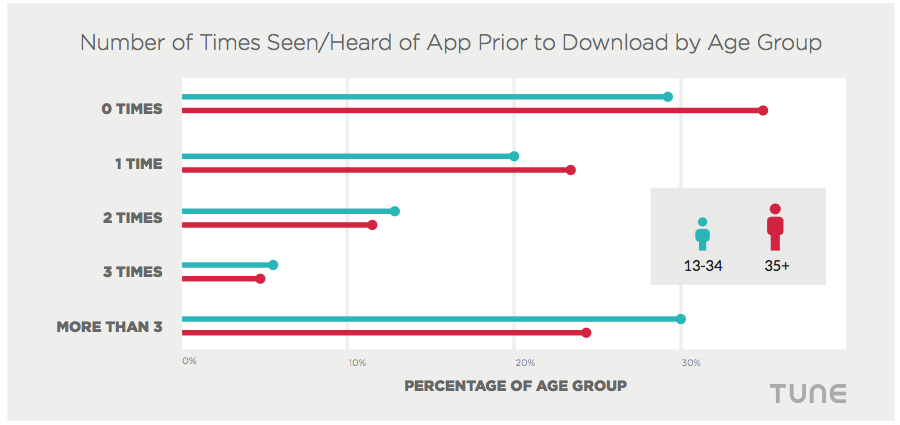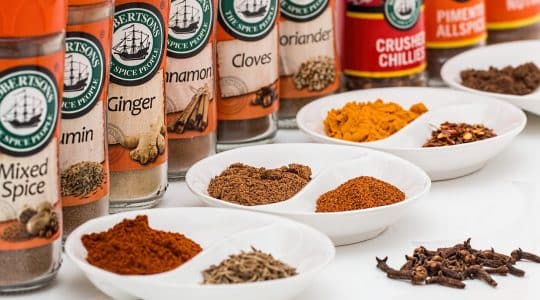
Mobile marketing is full of questions, especially when your app ranking is at stake:
- If my brand recognition grows, does my app install volume increase as well?
- If I boost my app’s rating by one tenth of a star, do I get more downloads?
- What proportion of keywords — terms people use when searching for an app — are branded?
- What percentage of app installs are organic versus paid?
A senior marketing manager from a major American brand asked me those questions, and others, last week. With his permission — and without revealing the name of the company — I’m sharing my emailed answer, lightly edited.
(And, if this hits a nerve, we might just do a few more posts like this.)
Branded versus non-branded keywords
Q 1: What percentage of keywords are branded versus non-branded?
Answer: The latest research I’ve done on that shows that for top queries, or high-volume queries, the overwhelming majority are branded. More details here.

From a TUNE study on the top 500 App Store keywords. Get all the info here.
(This is entirely in accordance with what the brand marketing manager was seeing as well.)
Impact of brand awareness on install volume/velocity/rank
Q 2: What is the impact of brand awareness on install volume/velocity and thus rank?
Answer: I don’t have a specific number but it is huge. Here are a couple of data points to consider:
First, people say brand doesn’t matter, ranking it 5th on their list of what convinces them to install:

From a TUNE app store optimization report. See the full blog post and free report here.
But, 70% of people who install an app have heard of the app or have seen it prior to installing, and a third have seen or heard about it three or more times. And, that’s even more likely for women.

From a TUNE app store optimization report. See the full blog post and free report here.
In addition, top apps are very strongly correlated with big brands that have large online footprints:

From “How brand helps deliver more app installs.” See the full blog post and report here.
Top apps are also very strongly correlated with big brands that have large social footprints:

From “How brand helps deliver more app installs.” See the full blog post and report here.
In other words, brand is very significant. It’d be interesting to compare actual size of brand awareness and footprints with App Store and Google Play CTRs on impressions and app listing pages, but I don’t have that data.
My guess: incremental jumps in positive brand awareness — and maybe NPS (net promoter score) would be a good measure — would boost CTRs by a percent or two.
Impact of rating changes on install volume
Q 3: What is the impact of small ratings changes — 4.3 to 4.4 stars, for instance — on install volume?
Answer: I don’t 100% know, but here two thoughts, followed by some relevant data.
- On the user psychology side, my guess is minimal except where the difference is optically significant. In other words, a shift from 3.9 to 4.0 would be a MUCH bigger and more important shift than one from 4.3 to 4.4. I’d think 4.4 to 4.5 would be pretty good too, but 4.6 and 4.7 would be essentially functionally identical. Note: this could be culturally dependent and different in different countries.
- On the App Store/Google Play side, my guess is that where you are almost exactly tied with another app for 2nd or 3rd or 1st place, a bump here could just be the one datapoint that you need to push over the edge and get you ranked before that app. This change is likely far more
significant than the psychological one I mentioned above.
However …
I think good-to-great ratings are necessary but insufficient, mostly because top-ranked apps are already so close in ratings.
For example, the top 150 iOS apps average 3.81 stars each with variance of only .6. Think how much closer the top 10 or top 5 are to each other.

From “App Store Optimization: How to win Google Play and App Store search.” Get the full post and report here.
And, the top Android apps (top 240 per category) average 4.16 stars with a vanishingly small variance of .3. Again, imagine how much closer the top 5 or 10 are to each other.

From “App Store Optimization: How to win Google Play and App Store search.” Get the full post and report here.
Ultimately, I think that top rankings are table stakes and no longer a key differentiator between top apps. Of course, screw this up, and you’ll pay 🙂
And, as I’m sure you know, it’s easy to boost them: in-app messages about satisfaction leading to the App Store reviewing screen if user satisfaction is high. The question is: do you want to bug users about this?
What percentage of app installs are organic vs paid?
Q 4: What percentage of installs in my category are organic vs. paid vs. owned sources?
Answer: I would have to pull a specific report on that to find out. The short answer is: I don’t know.
What I do know is that about 90% of app installs are organic. Here’s a breakdown by key countries and platform:

From TUNE’s mobile global report. See the blog post and get the full report here.
As a category, my guess is that yours is much less organic than most categories. It’s competitive, has a clear, simple, and lucrative business model, and it’s something that someone may not download or install until they absolutely need to.
Do your own Ask TUNE
Do you have questions you’d like answered? Ping me on Twitter with your questions, and I’ll do my best to answer them with TUNE data.
Author
Before acting as a mobile economist for TUNE, John built the VB Insight research team at VentureBeat and managed teams creating software for partners like Intel and Disney. In addition, he led technical teams, built social sites and mobile apps, and consulted on mobile, social, and IoT. In 2014, he was named to Folio's top 100 of the media industry's "most innovative entrepreneurs and market shaker-uppers." John lives in British Columbia, Canada with his family, where he coaches baseball and hockey, though not at the same time.




Leave a Reply
You must be logged in to post a comment.